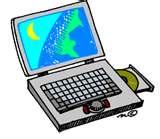Hands-On Citation Analysis:
Finding and Using Data
Citation analysis, although it has its limitations is still a very useful tool to use when researching a topic, especially if you need to cover your topic in-depth. Here are just some of the types of information you can obtain from citation analysis:
- Starting with an important, older paper, look at the papers citing this seminal or core article to locate relevant literature, and to gain some insight into how a research field has developed.
- Review the bibliographies of papers online and follow links to papers of interest and to trace the development of methods, theories, or research
TIP: Looking at bibliographies is an important method to include in order to make your search systematic and thorough.
_____________________________________________________________________
While the Web of Science database provides citation information at the article level, another tool by the same company, Journal Citation Reports, builds on article level citation data to develop journal-level citation information. The pros and cons of this data, impact factors, were discussed in more detail in an earlier unit on Citation Tools.
Despite the controversy, high impact journals are candidates to be considered for publishing your research, and for keeping up with the literature in your field.
The Web of Science database also has functionality to provide other types of data. This analysis is performed using the “Analyze” function applied to a set of search results. Analyze counts the number of instances of different kinds of data present in a set of search results. Some of the most useful data of this type are Author, Institution, and Source.
Author data can help identify important researchers in a field. Similarly, institution data can help identify major research centers. Source data, by listing the most frequently used journals can provide some guidance in identifying journal to scan or otherwise keep up with, and also to identify relevant titles for publishing your research.
Don’t forget that the quality of citation data and other information is only as good as the accuracy and relevance of your initial topical search. If you have questions about searching, review the previous unit that introduces important search concepts and shows you how to search Web of Science, the premier citation database.
The rest of this unit will guide you through demonstrations of how to analyze search results in Web of Science for both article citation data, and for additional types of data. This unit also includes a demonstration of how to use Journal Citation Reports to identify journals in your discipline that have the highest impact factors.



